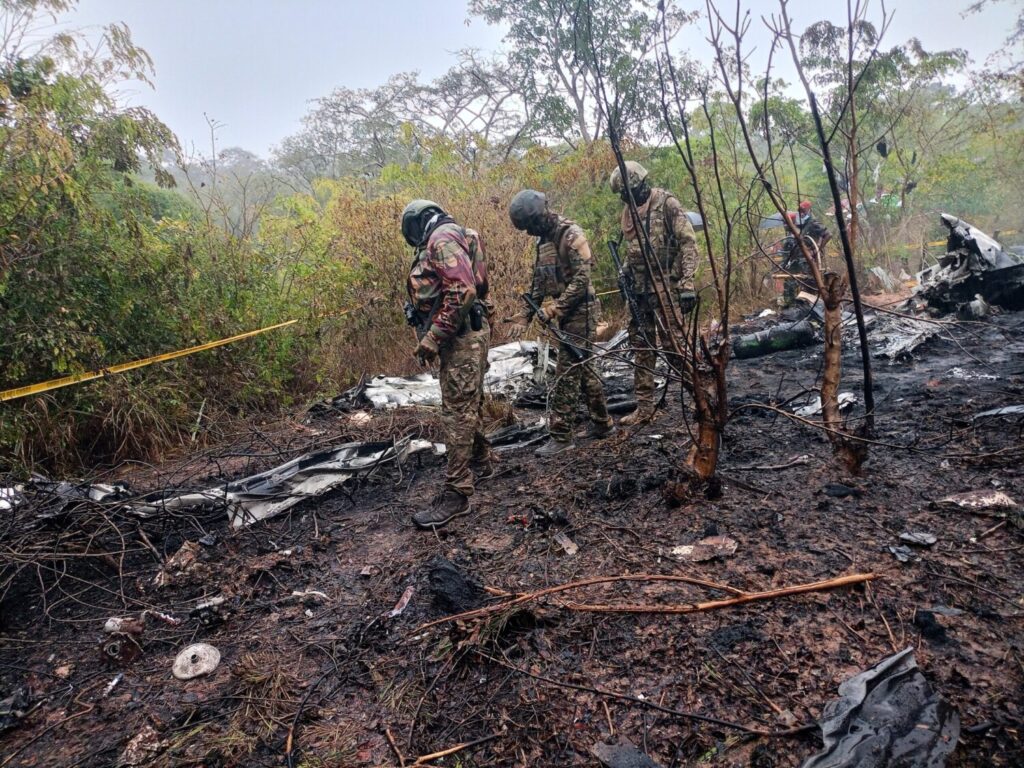YTC Ventures Trending News | Technocrat’ Magazine
October 29, 2025
The Incident
- Time & Location: 5:30 a.m. local time, Diani Airstrip, coastal Kenya
- Operator: Mombasa Air Safari
- Destination: Maasai Mara National Reserve
- Crash Site: Hilly terrain, Kwale County (~25 miles from takeoff)
- Outcome: Aircraft exploded mid-air; no survivors
The crash happened on October 29, 2025, at approximately 5:30 a.m. local time (EAT).
The flight was scheduled as a routine 45-minute hop from the sun-drenched beaches of Diani to the savanna plains of Maasai Mara, a route flown dozens of times daily during high season. Witnesses near the airstrip described a normal takeoff—engines roaring, wings level—before a sudden loss of altitude. Within seconds, a massive fireball lit up the pre-dawn sky, scattering debris across a 200-meter radius of dense bush and rocky outcrops. Local fishermen and early-rising hotel staff rushed to the scene but were met with intense heat and thick black smoke.
Victims & Response
- Passengers: 12 European tourists
- Nationalities: Primarily Hungarian, German, and other EU citizens
- Confirmation: Kwale County Commissioner Stephen Orinde
- Next Steps: Consular teams notifying families and verifying identities
- Rescue Challenges: Remote, rugged terrain delayed access
Among the victims were honeymooners from Budapest, a retired German couple celebrating their 40th wedding anniversary, and a group of wildlife photographers from Munich.
One passenger had live-streamed their boarding on Instagram just minutes before departure, smiling and waving from the tarmac. That final post has since gone viral, viewed over 2.1 million times. Emergency crews, including Kenya Red Cross and local police, used machetes and 4×4 vehicles to reach the site, but confirmed all aboard were killed on impact. DNA sampling is underway to aid identification, as personal effects were largely incinerated.

Aircraft & Investigation
- Type: Light turboprop (similar to Beechcraft B200 Super King Air)
- Focus Areas:
- Mechanical failure
- Pilot error
- Environmental factors (coastal winds)
- Lead Agency: Kenya Civil Aviation Authority (KCAA)
- Historical Context: Echoes 2017 Melbourne crash (5 dead, including U.S. tourists)
The aircraft, registered under Mombasa Air Safari, had been in service for over 18 years and was due for a major maintenance cycle next month.
While it passed its last airworthiness check in July, critics argue that visual inspections alone are insufficient for aging airframes operating in corrosive coastal environments. Investigators are retrieving the flight data recorder (FDR) and cockpit voice recorder (CVR)—both critical to determining whether engine flameout, control surface failure, or spatial disorientation played a role. Early speculation points to possible dual engine failure, a rare but catastrophic event in twin-turboprop designs.
Systemic Risks in Safari Aviation
- Market Size: $1.5 billion industry in Kenya
- Flight Volume: 300+ light-aircraft trips weekly in Maasai Mara (peak season)
- Fatal Accident Rate:
- Small aircraft (<19 seats): 40% of Africa’s fatal crashes
- Global average: 15%
- Tech Gaps:
- No mandatory AI predictive maintenance
- Limited real-time engine monitoring
- Inconsistent satellite navigation (EGNOS/WAAS equivalents)
Kenya’s safari aviation ecosystem is a high-stakes ballet of logistics and thrill. Tourists pay $300–$600 per seat for these short flights, expecting seamless transfers from beach to bush.
Yet many operators run on razor-thin margins, delaying costly upgrades. A single Beechcraft B200 costs $4.5 million new; retrofitting with modern avionics can add $800,000 more.
Without regulatory teeth or insurance incentives, adoption stalls. Meanwhile, pilots often fly 6–8 legs per day in VFR (visual flight rules) conditions, increasing fatigue and human-error risk.
Tech Solutions That Could Save Lives
- AI-Driven Predictive Maintenance → Flags micro-fractures, vibration anomalies, and oil degradation before flight
- IoT Sensor Networks → Streams 200+ data points per second to ground control
- Automated Distress Beacons → Activates on impact, transmits GPS + biometric data
- Satellite Navigation Upgrades → SBAS-enabled approaches in zero-visibility zones
- Projected Impact: Up to 30% reduction in incident rates (MIT models)
Imagine a world where every engine bearing has a digital twin—virtual replicas updated in real time via 5G. A tremor in turbine balance? Alert sent 12 hours before takeoff. Fuel contamination? Auto-divert to alternate airstrip.
These aren’t sci-fi—they’re deployed today in commercial jets. The barrier isn’t technology; it’s economics and political will. A $50,000 sensor suite per aircraft could be subsidized through carbon-offset programs or EU tourism levies—paying for itself in one prevented tragedy.
Public & Industry Reaction
- Social Media: #KenyaPlaneCrash trending globally (45K+ posts in 6 hours)
- Key Demands:
- EU audits of all Kenya-based safari operators
- Mandatory tech retrofits within 24 months
- Blockchain-verified digital maintenance logs
- Stakeholder Pressure:
- Families of victims launching online petitions
- Adventure travel insurers threatening premium hikes
- Global regulators (EASA, FAA) monitoring developments
A Change.org petition titled “No More Sky Coffins” has surpassed 180,000 signatures, calling for an international safety pact for adventure aviation. Major tour operators like Abercrombie & Kent and Micato Safaris have suspended light-aircraft bookings pending KCAA findings. Meanwhile, aviation insurers are reportedly drafting “high-risk corridor” exclusions for East Africa unless operators meet new tech benchmarks by Q2 2026.
Path Forward
- Immediate (0–48 hours):
- Full KCAA preliminary report
- Ground all similar-aged aircraft in Mombasa Air Safari fleet
- Short-Term (1–6 months):
- Emergency audits of 200+ safari aircraft
- Pilot retraining on upset recovery and wind shear
- Long-Term (1–3 years):
- Public-private tech consortium (Google, Airbus, Kenyan gov’t)
- Subsidized AI diagnostics via SafariSafe Fund
- Real-time fleet monitoring dashboard for regulators and insurers
- Regional safety data lake (anonymized black-box uploads)
The tragedy is not just a Kenyan issue—it’s a global wake-up call. Europe sends over 1.2 million tourists annually to Africa’s wildlife parks. Each one boards a light aircraft trusting decades-old systems. The cost of inaction is measured in human lives, shattered families, and eroded confidence in sustainable travel.
Innovation isn’t optional—it’s survival. And survival demands we act now.
YTC Ventures explores the intersection of technology, capital, and global impact. Subscribe for exclusive insights into emerging risks and opportunities.

Comments